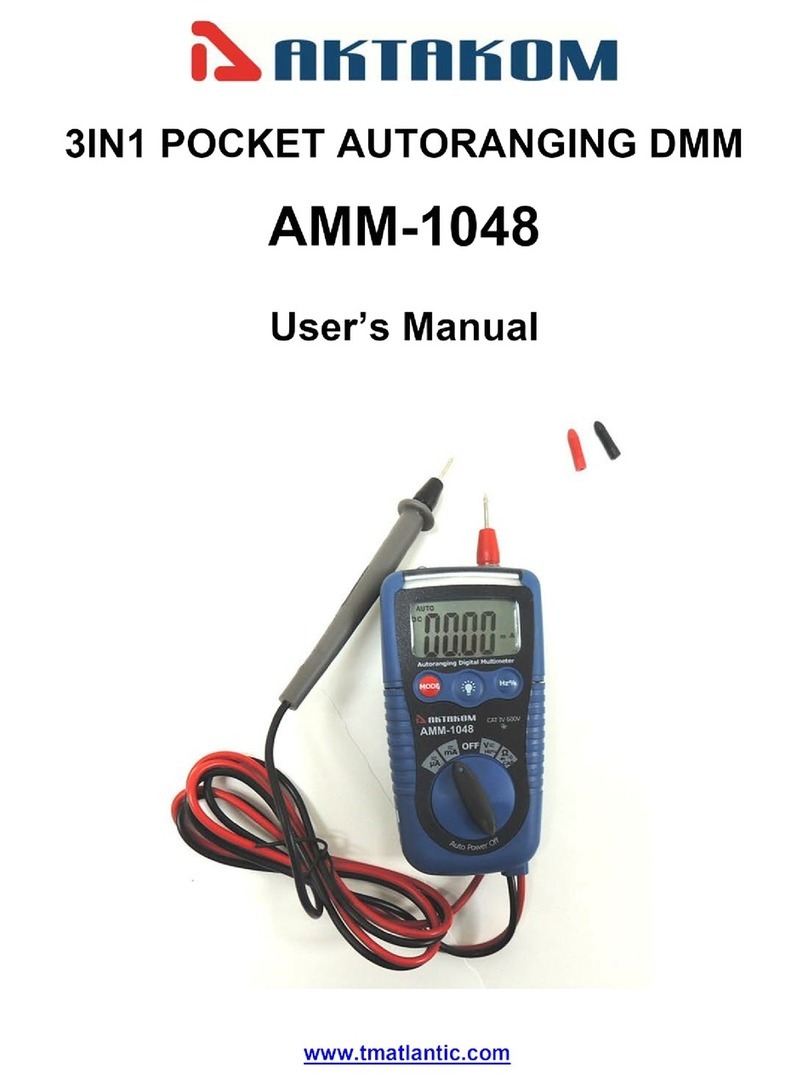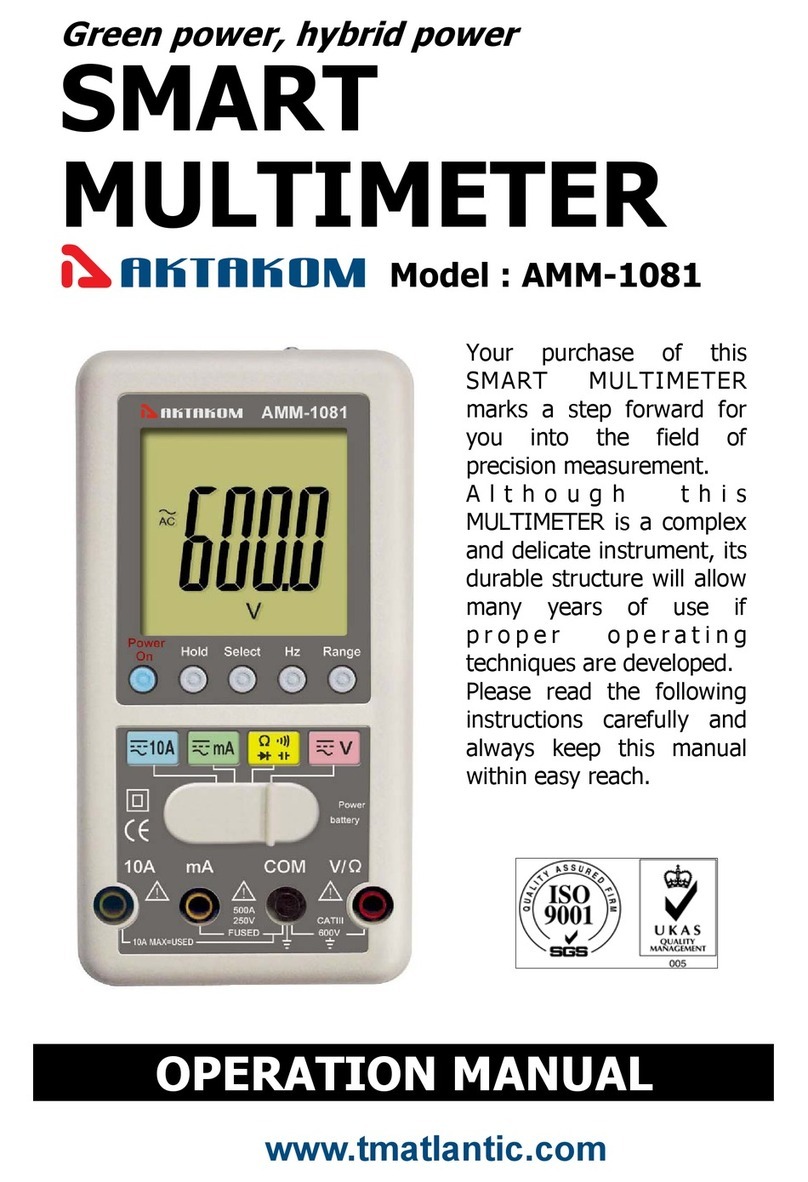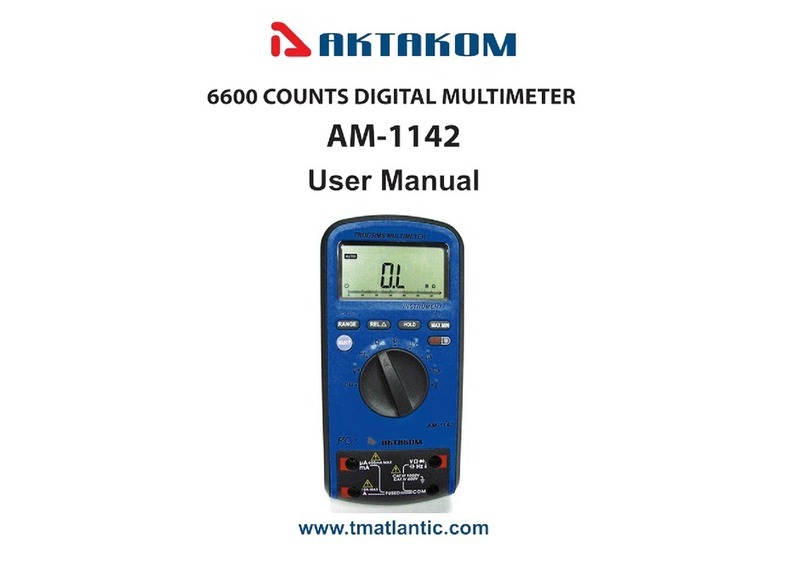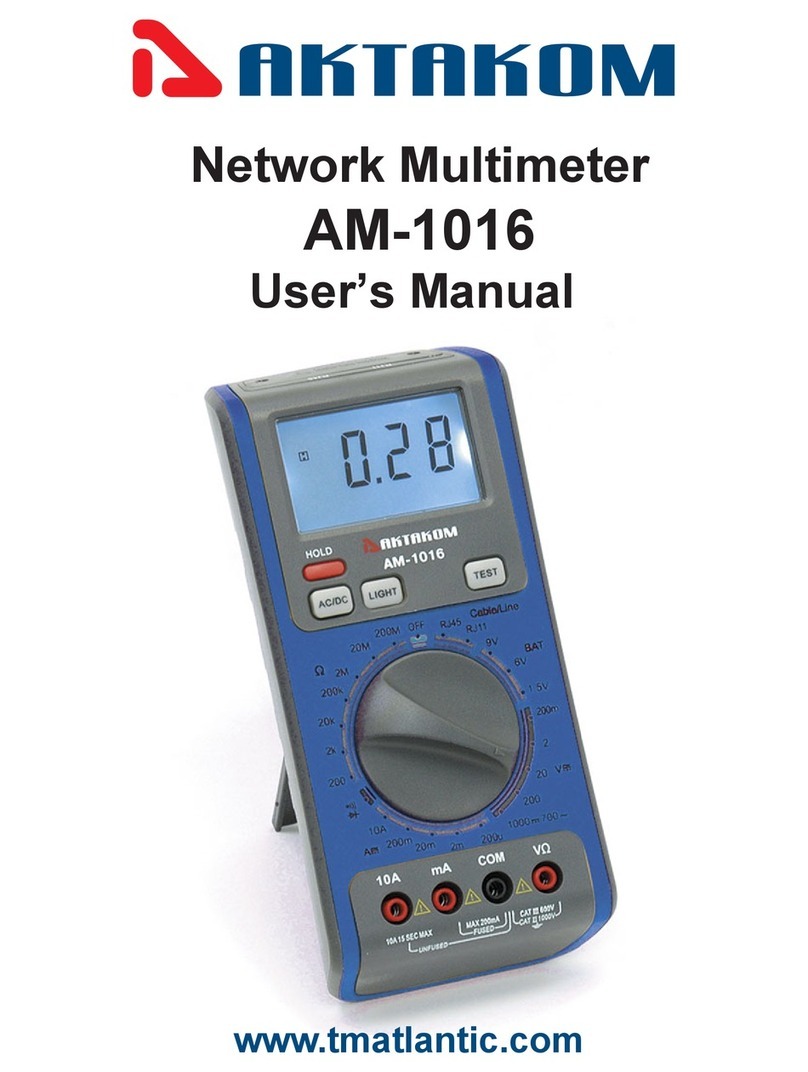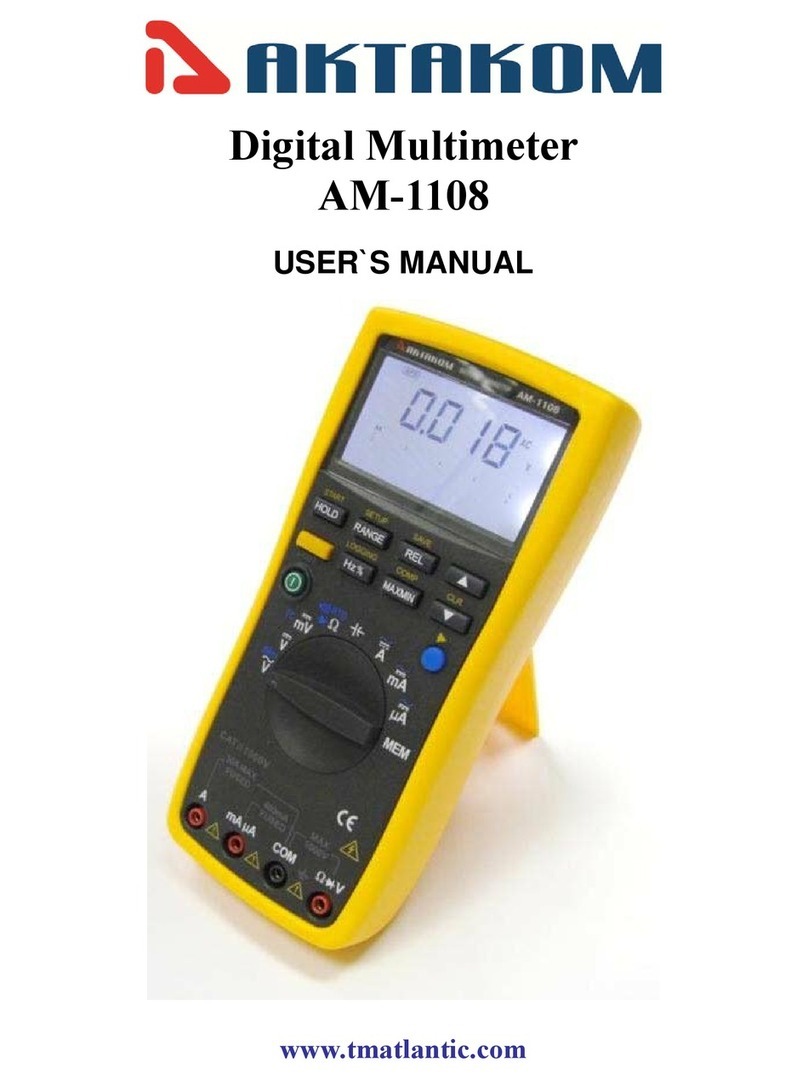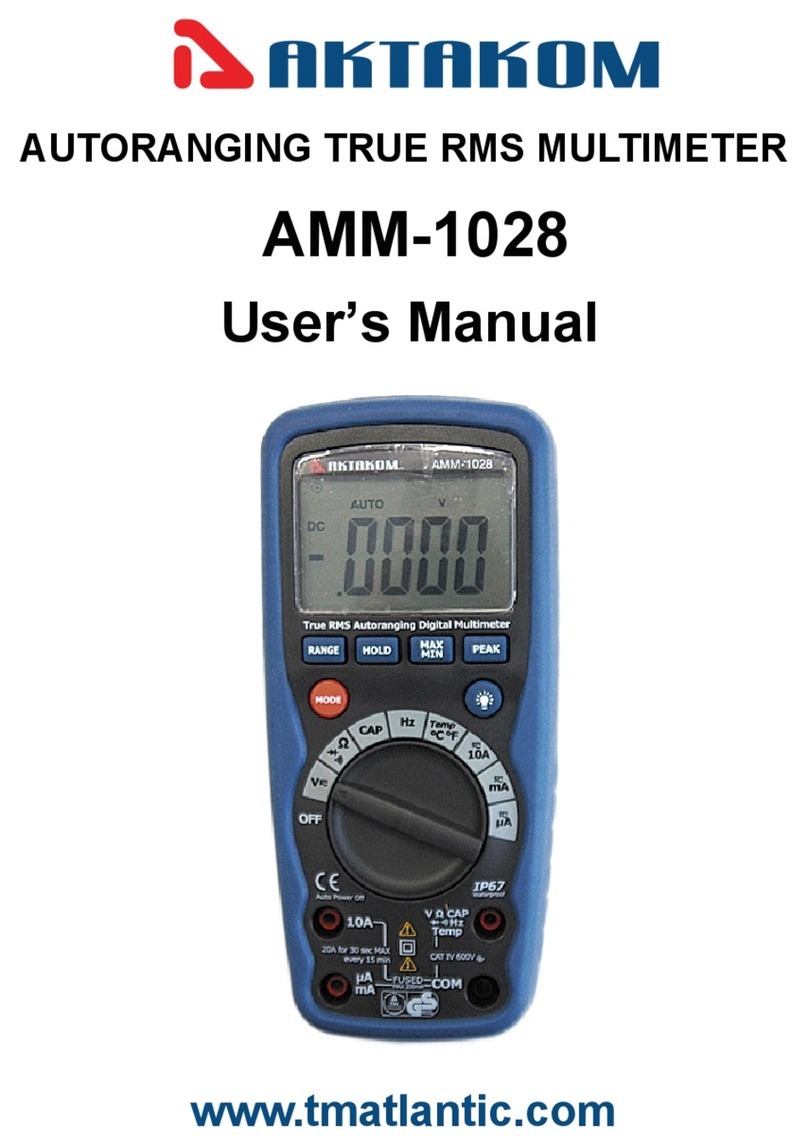
not connected to a device, the display may show a random,
changing reading. This is normal and is caused by the high-input
sensitivity. The reading will stabilize and give a proper measurement
when connected to a circuit.
DATA HOLD BUTTON
The Data Hold function allows the meter to "freeze" a measurement
for later reference.
1. Press the DATA HOLD button to “freeze” the reading on the
indicator. The indicators “HOLD” will be appear in the display.
2. Press the DATA HOLD button to return to normal operation.
BACK LIGHT BUTTON
The BACK LIGHT BUTTON is used to turn the back light on Only. To
extend the battery life, The back light will be turned off automatically
within around 3 seconds
/
BUTTON
The ഒ/ഘButton is used to select ഒor ഘfunction when making
temperature measurement. To set the rotary switch at TEMP position
and “ഒ”is being displayed, the LCD display will show temperature for
ഒ. To push the ഒ/ ഘSWITCH ,
w temperature for ഒ. To push the ഒ/ ഘSWITCH , “ ഘ” will be
displayed and at the same time the LCD display will show temperature
for ഘ. To push again ,it will show for ഒ.
DC VOLTAGE MEASUREMENTS
CAUTION: Do not measure DC voltages if a motor on the
circuit is being switched ON or OFF. Large voltage surges may
occur that can damage the meter.
1. Set the function switch to the V DC position (“mV” will appear in
the display).
2. Insert the black test lead banana plug into the negative (COM)
jack and the red test lead banana plug into the positive (V) jack.
3. Touch the test probe tips to the circuit under test. Be sure to
observe the correct polarity (red lead to positive, black lead to
negative).
4. Read the voltage in the display. The display will indicate the
proper decimal point and value. If the polarity is reversed, the
display will show (-) minus before the value.
AC VOLTAGE MEASUREMENTS
WARNING: Risk of Electrocution. The probe tips may not be
long enough to contact the live parts inside some 240V outlets
for appliances because the contacts are recessed deep in the
outlets. As a result, the reading may show 0 volts when the outlet
actually has voltage on it. Make sure the probe tips are touching
the metal contacts inside the outlet before assuming that no
voltage is present.
CAUTION: Do not measure AC voltages if a motor on the
circuit is being switched ON or OFF. Large voltage surges may
occur that can damage the meter.
1. Set the function switch to the V AC position.
2. Insert the black test lead banana plug into the negative
(COM) jack and the red test lead banana plug into the
positive (V) jack.
3. Touch the test probe tips to the circuit under test.
4. Read the voltage in the display. The display will indicate
the proper decimal point, value and symbol (AC, V, etc.).
ಧ9 ಧಧ10 ಧ
